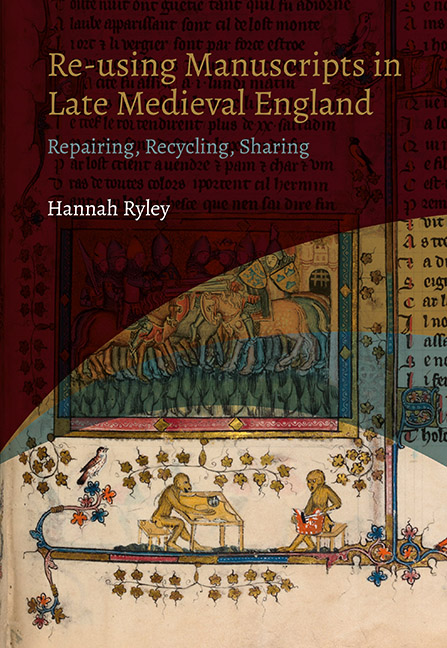Conclusions
Published online by Cambridge University Press: 16 July 2022
Summary
Medieval common-profit books were available to future users, but only for ‘as longe as þe booke enduriþ’.Today, hundreds of years after common-profit inscriptions like this were written into manuscripts, what it acknowledges still resonates: books don't last forever. Yet what these inscriptions also demonstrate is that people in the past could and did acknowledge the durability of their books. The foremost achievement of this book is to refocus attention on moments like this, when we can witness late medieval manuscript re-use in action.
Throughout, this book articulates the story of medieval manuscripts from the users’ and re-users’ perspectives by asking what motivated their habits of engagement with their books. Why did they value books in particular ways? Did they prioritise use-values over other kinds of value? The novelty of my approach is to reconsider production, conservation, and repair efforts from the perspectives of the medieval people who made, used, and worked with books, to imagine the affordances and obstacles to those activities presented by the material fabric of medieval books. I have accomplished this by scouring the archives and literary texts that survive from the late medieval period in unusual ways, by transcribing and making available otherwise inaccessible information and by redefining the possibilities of source study for book history. All this adds significantly to what is known about parchment and its uses in medieval books, as well as suggesting that it is worth reconfiguring our vocabulary to better reflect what we actually see in surviving manuscripts.
The long fifteenth century was a time that saw intense development in the production of books, and while there were innovations, certain practices and processes endured. Books were made, remade, and re-used in myriad ways, many of which were known in the centuries before this period, and many of those ways of doing things continued in the centuries that followed. As indicated in the introduction, re-uses of book materials (both in books and outside books, for example in domestic settings) and second-hand circulation in England have been studied in the context of the Dissolution of the monasteries and the Reformation.The emphasis on this particular episode of book-recycling activity has been highly informative for book historians in all periods. But recycling also happened long before medieval books were rendered culturally suspect in this way.
- Type
- Chapter
- Information
- Re-using Manuscripts in Late Medieval EnglandRepairing, Recycling, Sharing, pp. 183 - 188Publisher: Boydell & BrewerPrint publication year: 2022

